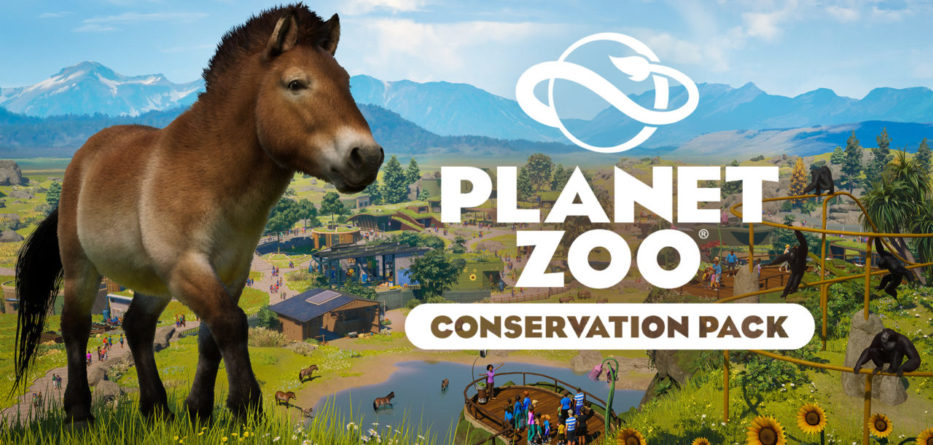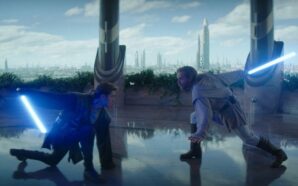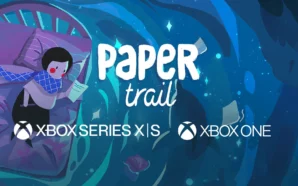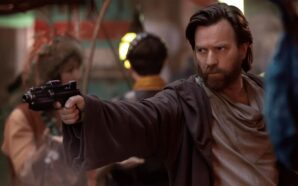I’m incredibly late to the party with Planet Zoo. Having been released in 2019 it completely passed me by. I don’t know why, it’s right up my alley having enjoyed the old Bullfrog classics in my youth, and spending a lot of time with the Roller Coaster Tycoon games and more recently 2 Point Hospital. It’s safe to say I like a construction based management SIM. I’m here now though and realise I’ve been missing a lot. With an excellently full base game and now 10 DLC additions there’s so much to do.
Planet Zoo has consumed me. I’ve shirked all other games to play nothing else over the last few weeks. It isn’t simply a get some animals and house them situation, play a zoo and move on. There are plenty of systems working to make Planet Zoo constantly engaging. Setting up habitats and park building are initial pulls. It’s animal breeding, a shared market place and improving the visitors’ experience which holds those satisfying loops.
I’ve been playing the franchise mode mostly. Whilst there is a campaign, of sorts, with objective based pre built zoos and a money is no object sandbox, the franchise mode offers something in between. Franchise mode starts players off like a sandbox. A large empty plot of land to work with, the base set of buildings with items to place and an open animal market with low grade animals to invite allows players to begin slowly. The challenge is a very low amount of starting cash and an even lower amount of conservation credits, the game’s other currency. This slow start is a challenge but it is one easily overcome with some practice and clever, cost saving habitat placements. Once established and with some currencies to use, rarer or better quality animals will become available through the marketplace which is shared across players. I’m having a lot of fun breeding species and trading the adult animals on the market. I’ve built up a healthy set of conservation credits ready to purchase rarer animals. This cycle very much depends on what other players are doing, and what animals they have to send to the market. Playing like this means there are a bunch of animals I still haven’t experienced such as Lions, Elephants and Giraffes which tend to go for thousands of credits. Secondary to buying animals on this shared market franchise mode also shares the player’s animal storage, the space animals go when bought and before being sent to a zoo. This means players can set up another zoo and pull from that shared animal storage. Players also start out with the same pool of conservation credits to buy better animals straight away on their second or third franchise zoo meaning quicker visitor pull and growth. Money however is zoo specific so each new franchise zoo has to be organically built.
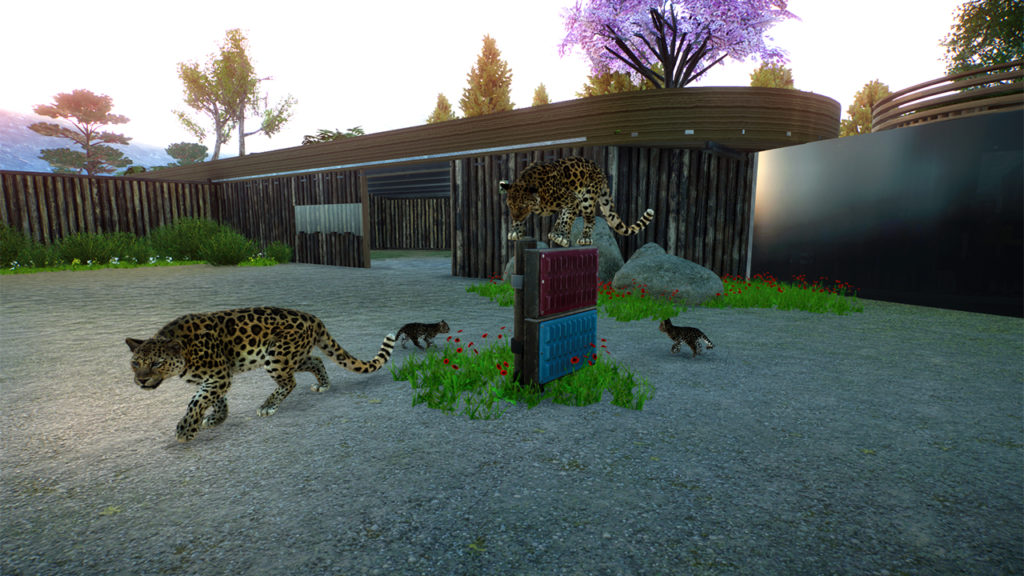
Other than becoming an animal trader in my spare time I’m also doing my day job in game, designing buildings. Planet Zoo has a pretty simple building system for constructing structures and set pieces. My first, and very simple project was a lowered and covered viewing space for some Gharials. Gharials spend a lot of time underwater so I was pleased that the terrain tools, habitat options and construction system allowed me to have underground viewing spaces. It was simple but allowed a flex of creativity against rectangular habitats and grid based paths I’d started with. This system also allows habitats and structures to be saved as blueprints and shared over steam and it would be easy for players to spend time just doing this part of the game (probably best done in sandbox mode with unlimited cash). The combination of constructing buildings and the shared animal marketplace have really hooked me.
And this is where the new conservation pack fits in beautifully. Having kindly been provided with a code I have been there, in my franchise zoo, to see the new animals introduced into the system, and their incredibly high conservation costs whilst they’re very rare. Then to see animals like the Amur Leopard flood the market and come down in price as people actively incorporate them into their zoos; and feel like the animal has been a big hit with players. This is unlike the Scimitar Horned Oryx which has fluctuated massively on the market in availability. I love this shared part of the game and logging on daily to see how the market is moving and what animals might be able to add to my zoos. I do feel a limitation here though. I’m not sure if it’s the uptake on some animals or perhaps how quickly they may get snapped up but the Przewalski’s Horse and Siamang have barely appeared from other players in the market. Some low grade ones appear as game stock to add to the zoo but the market is king and it falls down a little here. This isn’t just a criticism of the Conservation pack though as plenty of animals from the base game also face this issue in the market.
On my other Planet Zoo obsession, Construction, the new items are great. Foremost the new green roof pieces and dense flowers are the best addition. All of my buildings are constructed to have a green roof in some way. Shops, staff buildings and habitats all get the treatment. Technically, they don’t meet real world specs and build ups, most would have gone brown by now, but that’s the joy of the game, creativity is key. Along with these, I’m using a lot of the timber cladding options combined with the base game timber construction kits. One element of this system I particularly like is that all of the buildings placed in the zoo can be edited. I spent some time making the blueprint of the restaurant bigger, increasing the ground floor seating area and extending the glazed terrace. On other buildings, smaller additions have been made such as adding the green roofs, cladding options and even colour changes. It is a light and easily understandable system.
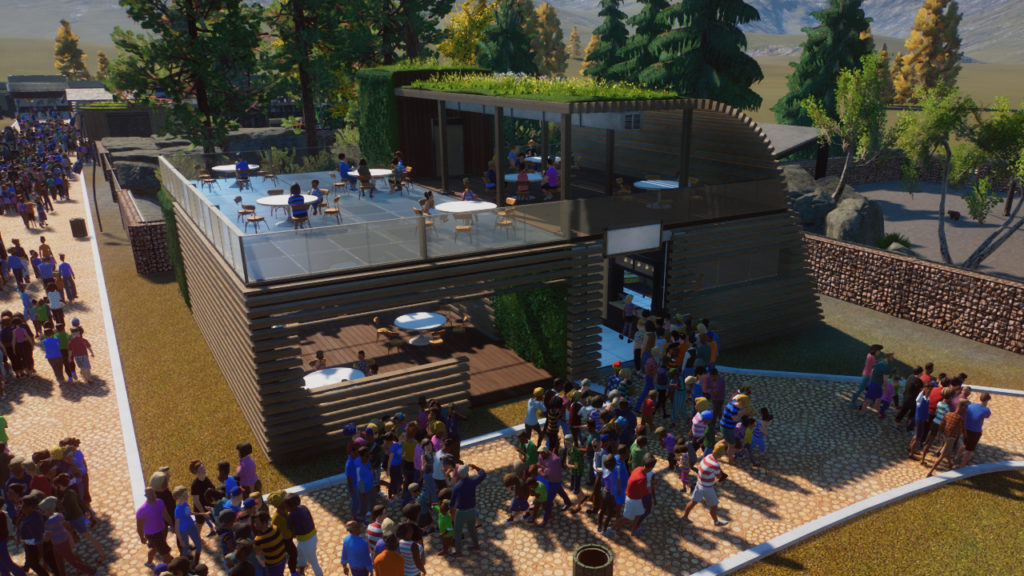
Further to my thoughts, I had the opportunity to put some questions to the developers who have kindly spent some time coming back to me. My questions have been answered by Kilian Schmitt, Game Designer on Planet Zoo, and Marc Cox, Art Director for Planet Zoo.
1. This will be the 10th DLC pack for Planet Zoo yet the first not to be themed on a specific area or habitat. What brought on the change to Conservation?
Kilian: Conservation has always been a core focus in the design for Planet Zoo and is something we really want to emphasise, with the animal’s conservation status influencing its rarity, and reflected in its cost to the player, as well as being of interest of guests. It’s something which is at the heart of the role of modern zoos, so we wanted to explore this aspect of zookeeping even further in our game with a dedicated Conservation Pack.
2. Were all the DLC packs planned out during the base games development or has this evolved over time?
Kilian: While we of course had a vision for what we might be able to bring to Planet Zoo in the future during the base game development, a huge benefit of providing this sort of post-launch support is the ability to react to feedback from our amazing players. The animals in each DLC are selected based on over-arching themes we want to explore, however popularity, the species’ prevalence within zoos, conservation status, and unique behaviours are all influencing factors when finalising a DLCs roster.
3. Is animal conservation something the team are passionate about, and has that stemmed from working on the game or was this inherent to the team already?
Kilian: I’d say it’s a mix of both! Several people on the development team have a background in zoology and biology which provides some fascinating insights, and others have always had personal interest in zoos and conservation. Of course, working on a project over such a long period naturally sparks further interest in folks too, and we learn so much during our research.
4. Many of the animals already in game are endangered species, so why these animals, and how were they chosen for the game?
Kilian: It’s always our goal to represent a varied selection of species within the game, so that players can create diverse zoos and learn about plenty of different animals. There are several factors influencing the final selection of animals in a DLC. Out of the animals we looked into for the Conservation Pack, these five animals were the perfect fit for our criteria: they all are species at the brink of extinction or considered extinct in the wild, but are managing a comeback through the help of zoological breeding programmes.
5. What kind of research goes into choosing the animals and their behaviours and interactions in game?
Kilian: We do extensive research on each animal we’re considering for a DLC pack to make sure they’re a great fit. From a wider selection, we evaluate animals based on their unique behaviours and how we can animate these, conservation status, how common they are in zoos, and how popular they are with the community.
Once the roster is finalised and we begin working on the animals, the design team works with an external researcher to confirm our information is accurate. This research then goes over to the art, animation and code teams in order for them to start working on model sizes, variations, and new behaviour systems. Of course, during the modelling and animation processes, artists, animators and sound designers do extensive research for their own reference points as well.
6. New scenery and plants appear as if they would be more easily tailored for specific habitats and locations, how hard was it to develop these for the theme of ‘Conservation’?
Marc: At the outset we wanted to ensure that our scenery choices represented our conservation theme as coherently as possible. It’s quite unique in comparison to much of our previous DLC scenery in that it doesn’t have a specific geographic location that we would normally focus a design on. Despite this, as soon as we began to think about the wider concerns of climate change, food chains, and the importance of pollinating species, the direction opened up lots of creative avenues with great potential.
One of the key goals for modern zoos and wildlife sanctuaries is to re-habilitate and ideally re-introduce species at risk back into their natural habitats, and nurturing the health of those environments is vital to their success. The inclusion of wild flowers for meadows for example, which are important for pollinators, felt like a natural complement to the pack’s themes.
Some of our sustainability-themed scenery and props also highlight further key drivers for habitat loss, such as food production, as well as introducing the player to more eco-friendly building materials such as 3D-printed concrete. Including these items encourages the player think more about the role of sustainability in conservation, and how this can be incorporated into their amazing Planet Zoo creations.
7. Are there any plants or scenery pieces which were already waiting in the wings to introduce which fit well with the theme or has everything been produced to fit the theme?
Kilian: Our scenery team takes great care to craft assets which best fit the theme of a DLC, so we usually produce only assets we also want to release for that specific pack or update. For the Conservation Pack, there were several assets we knew beforehand we wanted to release with it, as they were a great fit, for example the sustainable props Marc mentioned. Planet Zoo’s active community also suggest several scenery pieces on our forums, which we often look at for inspiration when compiling our selection.
8. Was there any thought put into changing things like energy generation or including deeper changes that would affect the games systems. Linking waste to compost for plants or solar panels on building roofs for example.
Kilian: We have a number of ways that this kind of sustainability is incorporated into the game. Using renewable energy is a core feature of energy supply in Planet Zoo, which has a direct impact on guests, as does recycling guest litter. As with most systems in Planet Zoo, these are abstracted into their current form from the real world, in order to keep the simulation fun and manageable for players. While we constantly evaluate and explore feedback, we don’t have anything to share regarding additional systems and features.
9. Could future packs pull from the Conservation theme also or are themes more of a one and done situation to try and continually provide more variety to the game?
Kilian: Conservation is a big focus within the core systems of Planet Zoo. With the Conservation Pack, we wanted to highlight this important aspect of zookeeping further. Previous DLC packs have of also contained endangered species with inspiring conservation backstories, so while the main focus of the Conservation Pack is conservation and endangered species, this has always been an important factor during development and something we actively consider in everything we create regardless of specific themes.
10. Being very new to the Planet Zoo community where are the best places to look for inspiration on layouts, habitats and animals and to get involved with the conversation? (I’ve been using the Planet Zoo Fandom Wiki a lot)
Kilian: Planet Zoo has a great active community that shares inspiring builds (and entire zoos!) via Steam Workshop, which can be used as inspiration or downloaded and added to your own game to explore! Joining the discussion with our lovely players over at our forum is another great way to ask for help and inspiration, or give us some feedback.
Thanks to Kilian and Marc for their answers and insight.
I’ll be putting down more thoughts on Planet Zoo soon and chatting further about it on the Tanked Up podcast, so keep your eyes and ears open for those. For everything else follow me @nova_47 on twitter.




